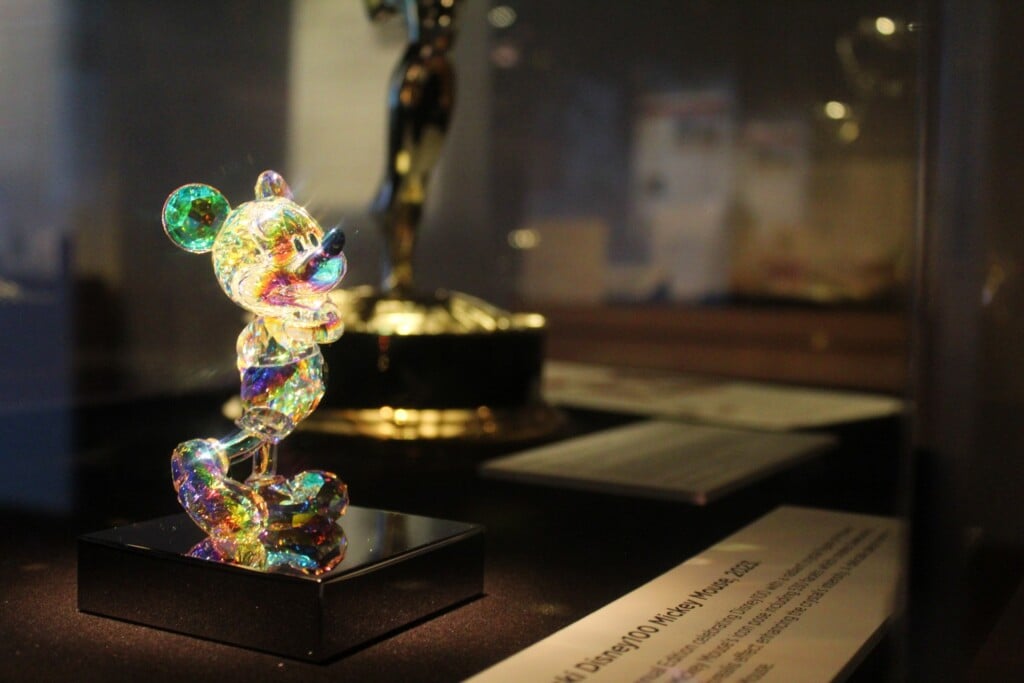Now This Is Cool
This might be news to James Dean and Miles Davis, but the Yoruba people of Nigeria invented cool. They call it itutu, and someone who possesses this mystic quality is generous and calm, possessing a sense of certainty.
There’s plenty about African art that the Western mind might not comprehend. For example, the Yoruba find beauty in the average, disliking things that are too attractive. But Western audiences share enough aesthetic vocabulary to appreciate the work of African artists. To express itutu, the Yoruba use blues and indigos — cool colors. And just as Americans might read a man’s flashy red Corvette as his attempt to exude a sense of power during his midlife crisis, the Yoruba use red to represent àshe — the power to make things happen.
Red and blue stand out because most of the other colors in the Belger Art Center’s The African Art Experience (recently extended through July 2) are earth tones. The majority of the pieces in the show are three-dimensional objects made of wood, clay, metal or natural materials such as woven and dyed textiles. The work comes from three private collections. Curator Maude Wahlman, a professor of global arts at the University of Missouri-Kansas City, lends several textile pieces she acquired in the early ’70s while she was in Africa working on an exhibit of contemporary African art for Chicago’s Field Museum. There are also a few selections from the collection of Raymond Lake, a psychiatrist at KU Medical Center. The bulk of the show contains work collected by two brothers, David and Clifford Gelbard of Long Island, New York, who began accumulating African art as a business investment about five years ago and decided to put together a catalog and send their holdings to museums and galleries.
It isn’t often that Kansas City audiences have a chance to see such a diverse collection of non-Western art. The Nelson’s Asian art collection is excellent, but its African and Native American galleries leave much to be desired, even after a recent renovation. It’s also a rare treat to be able to examine the work so closely — only a handful of the works at the Belger Center are behind glass, and many of them can be viewed from 360 degrees.
But these pieces were never intended to be displayed in a gallery setting — the Western concept of art for art’s sake is virtually nonexistent in African art. Instead, each piece was created to fulfill a specific purpose.
For example, “Oath Taking Figure, Kongo/Vili,” from the Democratic Republic of Congo, depicts a small wooden dog with a head at each end; it’s been hammered with dozens of rusty nails and sharp pieces of metal. Visible beneath a small piece of glass in the dog’s back is its stuffing — it’s filled with sacrificial and ritual materials such as river pebbles and white clay from river banks (the Kongo people believed that the energy of their ancestors resided under water). Each nail hammered into the wooden figure was accompanied by an appeal to the figure’s power — the nail was meant to activate the magic of the material inside the charm. People who use it must pledge to do a good deed in return, and the nails are physical reminders of those promises. The dog’s two heads show that it can move to and from the world of the visible and the invisible, seeking out evil wherever it lurks.
Most of the objects were commissioned by priests or kings for use in religious ceremonies. The gallery’s lighting enhances these religious origins — the room is dim, but lights shine brightly and reverently on each piece. “Kuba Costume,” from the Congo, consists of a red-and-brown feather headdress, a mask with two cowrie shells for eyes, and a red shirt and pants with an elaborate cowrie-shell belt and pouches. It radiates the wealth and prosperity of the royal family members who wore it for funerals. And though it’s hard to imagine actual faces behind the masks while they hang in front of the Belger Center’s white walls, that doesn’t mean the costume can’t be appreciated for its beauty as an object.
Postmodern theory holds that art like this can properly be viewed only in context, accompanied by the noises and smells and movement associated with the rituals for which people designed and created the art. That’s probably why a video of African music and dance plays on a continuous loop, and it’s easy to find pieces that look like the ones people are using in the video. In the show’s brochure, Wahlman writes that “African art is encoded with information about aesthetic preferences, history, religious values, political organization and technological skills.” But she provides little information on the history or purpose of each work; small plaques bear only the name of each piece, its medium and geographic origin. Wahlman hopes that viewers will purchase the catalog (which is $25; students pay $20), but the brochure may have to do for visitors whose budget doesn’t include a line for literature about African art. In fact, the best sources of information are the Belger Center’s friendly and well-trained volunteer docents, who are available to answer any questions or to give personal guided tours.
Audiences should have no trouble drawing something from the work, even if it’s as silly as noting that the “Helmet Mask Maconda,” from Mozambique-Tanzania, is reminiscent of a Simpson’s character with its round face, yellow coloring and slanted eyes. But these sorts of masks probably weren’t funny for the people who faced them: During initiation ceremonies, initiates were forced to overtake and unmask the wearer. The thick neck, heavy, lowered eyelids and slightly parted lips — revealing evenly spaced teeth sharpened to razor points — make the mask feel like a bully.
Another mask, from the Pende (Kasai) of the Democratic Republic of Congo, clearly deals with a violent subject matter and two opposing themes. It’s reminiscent of a rabbit’s face, with two long, earlike projections sticking up from the top. The mask is asymmetric — one eye is circular, and the other is a horizontal slit. The asymmetrical features refer to the opposing forces of the living and the dead. The top of one projection has a bladelike ending; the other stick comes to a sharp point. This kind of mask is known as a circumcision mask, hence the sharp sticks at the top.
Most of the pieces in this show were created during the late 19th century or the 20th century. But as Africa’s political and social realities changed, artists no longer received commissions exclusively from kings and priests. Now banks and Christian churches are among those requesting traditional works. The methods of creating traditional art have changed, too. British colonial influences led many artists to seek training in London and other parts of the world, and today African artists are using new techniques, materials and ideas.
The fabrics from Wahlman’s collection are examples of more contemporary works that were created not to be used but to be sold. “Cloud,” a tie-dye by an artist named Kadrath Kamara from Sierra Leone, is covered with a pattern that looks delicate and crackled, like morning frost on a window pane. Kamara creates the cloud pattern by gathering the fabric into puffs and tying it together with twine before placing it in a vat of dye; the colors blend gracefully from indigo to off-white and back again.
But the older pieces in this show have show the wear and tear of use. The African climate is not ideal for the preservation of organic materials such as wood. But insect holes, chipped and fading patinas, unraveling cloth and marred surfaces only add to their beauty. Like the traditions for which they were created, these art objects change as time passes.
The idea of itutu, however, will never go out of style.




